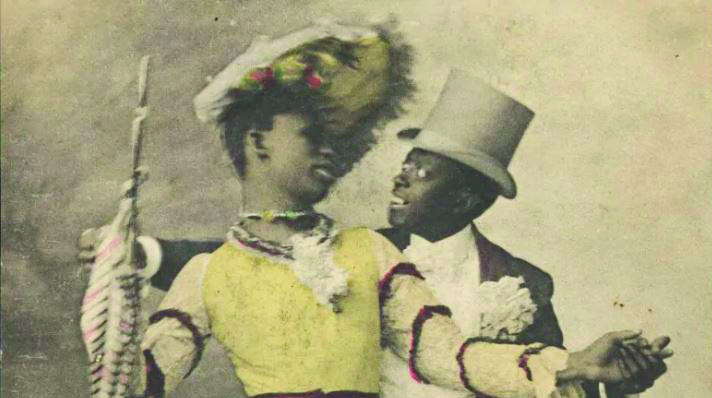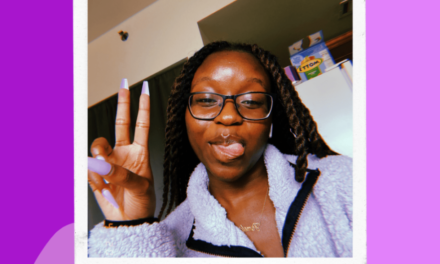Ballroom culture is such an important creation, and I’m not referring to the fancy dance parties with banquets and waltzing. I’m referring to the illustrious subculture that popularized iconic dance moves, such as voguing and dipping.
Popular television shows such as “Pose,” “Legendary,” “Rupaul’s Drag Race” and major music artists featuring drag queens in their music videos are amongst the many things that have pushed the ballroom and drag scene into the spotlight. Behind all of these sparkling details, however, is a deep and rich history that emphasizes the importance of the ballroom scene and how it served as a safe haven for LGBTQ+ Black and Brown individuals. To me, ballroom culture is far more influential and historically essential than it gets credit for.
Ballroom culture dates all the way back to the late 19th century. William Dorsey Swann, one of the first people to adopt the identity of a drag queen, was also the first person in the United States to lead a queer resistance group. In fact, he led a series of drag balls in Washington, D.C. during the 1880s and 1890s, with formerly enslaved men making up most of the attending population. As a formerly enslaved man himself, Swann paved the way for LGBTQ+ individuals in the Black community to have an outlet to express themselves freely.
Ballroom truly arose during the Harlem Renaissance, specifically in response to the Black churches advocating for the expulsion of LGBTQ+ residents in New York City. Ball events back then were so diverse and vibrant that they even garnered the attention of African American poet and activist Langston Hughes, who notably wrote of his experience at the annual Hamilton Club Lodge Ball in his essay, “Spectacles of Colors.”
Hughes wrote, “It is the ball where men dress as women and women dress as men. During the height of the New Negro era and the tourist invasion of Harlem, it was fashionable for the intelligentsia and social leaders of both Harlem and the downtown area to occupy boxes at this ball and look down from above at the queerly assorted throng on the dancing floor, males in flowing gowns and feathered
headdresses and females in tuxedoes and box-back suits.”
The first ball held by the Hamilton Lodge was integrated despite the presence of racial segregation in the U.S., although racism and prejudice still occurred within it. With no Black judges and a very little number of Black prize winners, it became a common belief that the judging was rigged in favor of white participants. It was even famously implied by drag icon Crystal LaBeija in the documentary “The Queen,” created by Frank Simon in 1968, that Black queens had to make themselves look white to win any prizes at drag beauty contests.
Racial tensions eventually pushed Black members of the ball community to find their own safe haven to express themselves. Crystal LaBeija, along with a fellow drag queen Lottie LaBeija, decided to do something in response to the racially oppressive drag system. So, in 1972, they established the first ballroom house and hosted their own annual event “Crystal & Lottie LaBeija presents the first annual House of Labeija Ball at Up the Downstairs Case on West 115th Street & 5th Avenue in Harlem, NY.”
This formation is thought to be the “birth” of houses as it created a trend of more iconic house formations, such as the House of Xtravaganza and the House of Ebony. Houses served and continue to serve as a place of security for Black and Brown queer people. Houses began to take on a family structure, with a “mother” or “father” acting as a mentor for their “children.”
With more and more houses on the rise, they began to compete with each other in order to outdo one another, with each competition having different categories. The most notable categories include face, body, runway and performance amongst various, more nuanced others.
Drag balls reached mainstream audiences in Jennie Livington’s award winning 1990 documentary, “Paris is Burning.” It truly offered an excellent exploration of queer culture, class and race in America, and specifically highlighted the ball culture of New York City and the communities within it. With this came the emphasis of the hardships the community faced.
Prominent members of the ballroom scene such as Venus Xtravaganza, Angie Xtravaganza, Pepper LaBeija and Willi Ninja were featured in the film. Each of them were nterviewed about issues such as the HIV/AIDS epidemic, racism, transphobia, homophobia, poverty and violence. Several interviewees expressed they would be disowned by transphobic or homophobic parents and were left homeless, with some even having to resort to sex work to support themselves. Some said that they would shoplift just to have clothes to walk in ballrooms.
One of the prominent subjects in the film, Venus, was murdered before filming finished, suspected to have been strangled by a speculated “disgruntled customer” during a sexual exchange. Her house mother, Angie, reacted to her death on camera, making for a display of the raw, tragic reality of existing as a racial and sexual minority.
With more people knowing and understanding the struggles that the ballroom community faced, people became inspired by it, including popular celebrities such as Madonna and Beyoncé. Even Beyoncé’s most recent album, “Renaissance,” takes clear inspiration from ballroom culture and house music; she directly thanked the queer community for “their love and inventing the genre,” at the Grammys earlier this year.
Ballroom culture has offered so much light and love for the LGBT+ community and people of color. It has influenced so many aspects of modern popular culture, along with inspiring so many LGBT+ people today such as Laverne Cox and Billy Porter. The way it was created truly shows how minorities will rise in the face of adversity, to truly express themselves and reject conformity. Born from tragic discrimination, the ball scene is a hopeful reminder that even the most shunned individuals will always have a place to go and vogue the house down!
Originally Published 2/23/23





